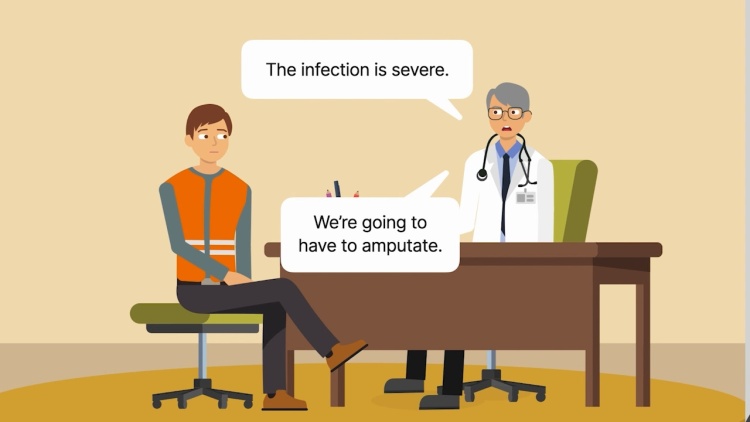Gallick v. Baltimore & Ohio R.R. Co.
United States Supreme Court
372 U.S. 108 (1963)
- Written by Alexis Tsotakos, JD
Facts
Gallick (plaintiff) was an employee of the Baltimore & Ohio Railroad Company (B & O) (defendant). Gallick worked along B & O’s right of way in the Cuyahoga River flats, where there was a pool of standing water filled with dead and decomposing rats and pigeons. B & O was aware of this pool of stagnant water. While at the work site, Gallick was bitten by an insect that was attracted by the standing water and decomposing animals. The bite became infected and eventually resulted in the amputation of both of Gallick’s legs. He brought suit against B & O under the Federal Employers’ Liability Act. At trial, the jury rendered a special verdict, under which it answered two dozen interrogatories. While the jury answered the interrogatories to find that B & O was aware of the stagnant water, that Gallick’s injuries resulted from the existence of the stagnant water, and that Gallick’s injuries resulted from an act or omission on the part of B &O, they also found that Gallick’s injury was not reasonably foreseeable to B & O. The trial court therefore found for Gallick, and the court of appeals reversed. The United States Supreme Court granted certiorari.
Rule of Law
Issue
Holding and Reasoning (White, J.)
Dissent (Harlan, J.)
Dissent (Stewart, J.)
What to do next…
Here's why 899,000 law students have relied on our case briefs:
- Written by law professors and practitioners, not other law students. 47,000 briefs, keyed to 994 casebooks. Top-notch customer support.
- The right amount of information, includes the facts, issues, rule of law, holding and reasoning, and any concurrences and dissents.
- Access in your classes, works on your mobile and tablet. Massive library of related video lessons and high quality multiple-choice questions.
- Easy to use, uniform format for every case brief. Written in plain English, not in legalese. Our briefs summarize and simplify; they don’t just repeat the court’s language.





